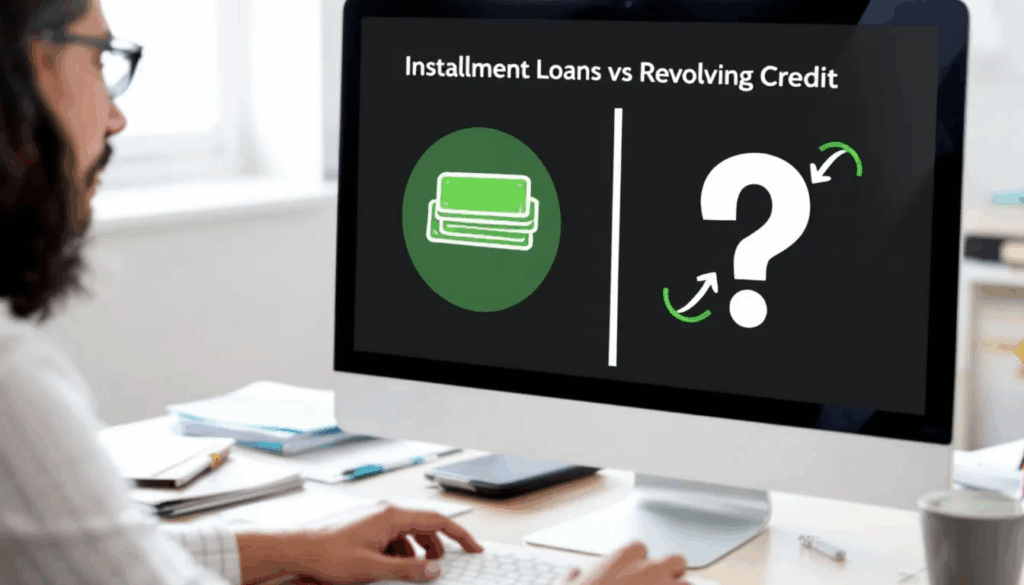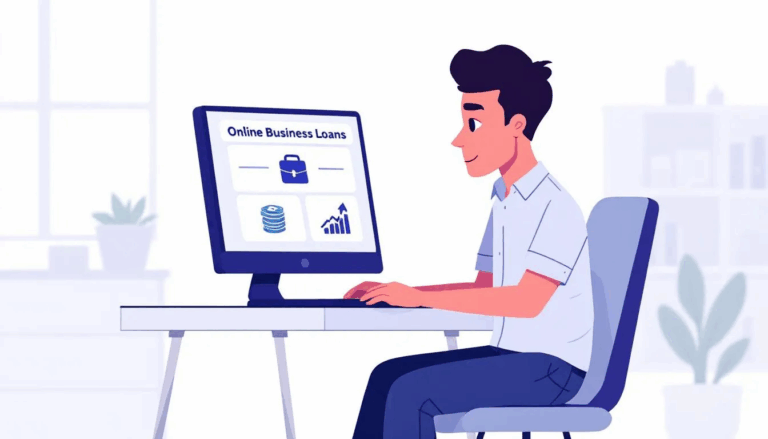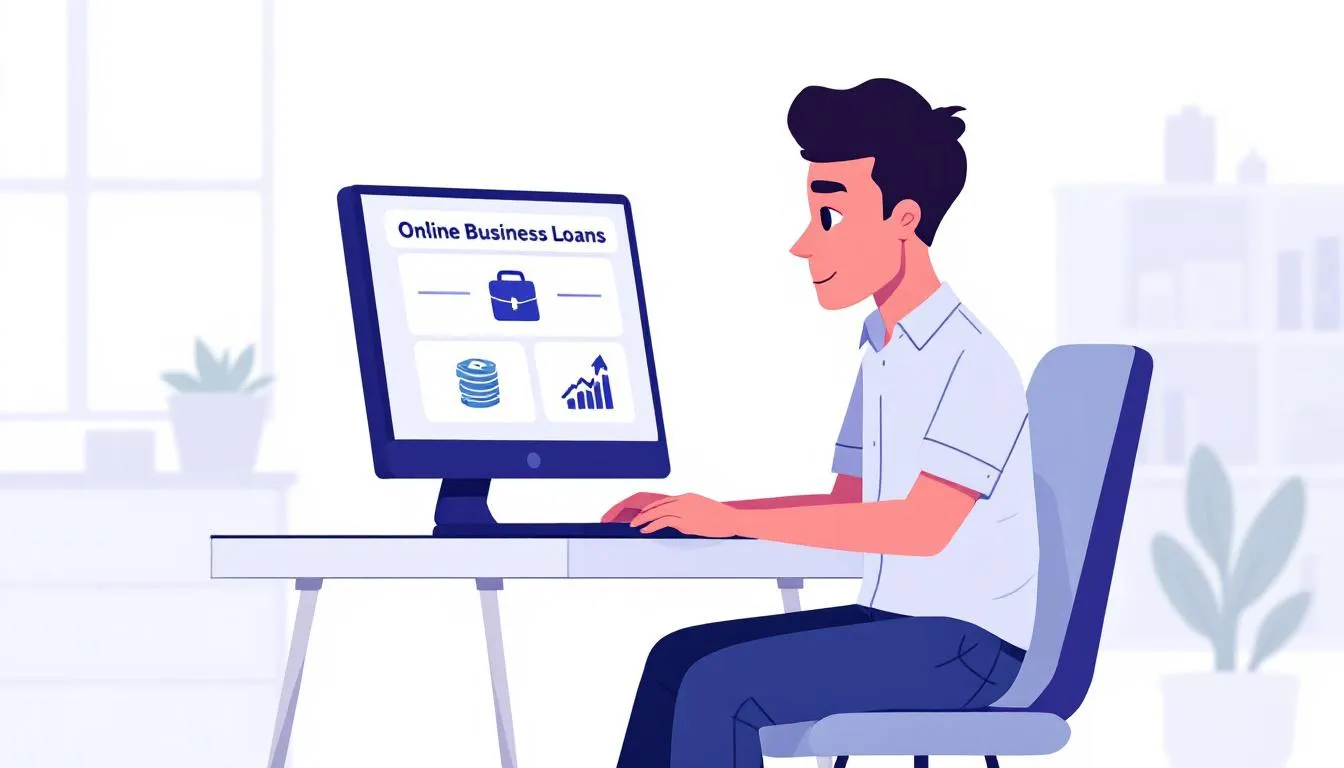What is an Installment Loan?
An installment loan is a type of loan in which borrowers receive a lump sum of money and repay it in equal installments over a predetermined period of time. These loans have fixed terms and repayment schedules outlined in the loan agreement.
Small businesses often utilize installment loans for various purposes, including working capital. The borrower and lender agree to the loan amount, interest rates, and repayment terms at the beginning of the loan. This type of financing provides predictability for borrowers, making budgeting easier.
Online lenders and traditional financial institutions, such as banks and credit unions, offer installment loans to businesses. These lenders have specific lending requirements that companies must meet to qualify for the loan.
Features of Installment Loans
- Predetermined fixed repayment schedule: Installment business loans are structured with a set number of regular payments—usually monthly—that pay off both principal and interest over the agreed term.
- Fixed interest rate (typically): Most installment loans maintain a constant rate throughout the loan term, making it easy to predict your monthly payments.
- Variable rate option: Some installment loans come with variable (or floating) interest rates, which can fluctuate over time based on market benchmarks—this means payments may change depending on economic conditions.
- Amortizing structure: Each installment payment includes both principal and interest, gradually reducing the remaining balance until the loan is fully paid off by the end of the term.
- Easier budget planning: Since most installment loans have fixed payments, small business owners can budget for the repayment schedule more easily.
Installment Loan Benefits
Installment loans can provide small businesses with predictable monthly payments, making budgeting and managing cash flow easier. Additionally, these loans often have longer repayment terms, allowing businesses more time to repay the borrowed funds without putting too much strain on their finances. Overall, installment loans can be a flexible financing option for small businesses looking to fund growth or cover unexpected expenses.
Installment Loan Drawbacks
One drawback of installment loans is their rigid repayment structure, with the same amount due each month. Businesses with inconsistent revenue or cash flow might find it challenging to make the same monthly payment for the loan term.
Most installment loans are non-renewable, meaning you cannot obtain additional funds after using the initial loan disbursement. Unlike a revolving line of credit, borrowers must pay interest for the full loan amount rather than just the funds they use.
Additionally, missing payments on an installment loan can negatively impact a borrower’s credit score, making it harder to secure future loans or credit. It’s essential for borrowers to carefully consider their ability to repay the loan before taking out an installment loan, thereby avoiding these potential drawbacks.
Small Business Installment Loan Pros & Cons
Pros:
- Provides access to a larger sum of money upfront.
- Allows for predictable monthly payments.
- It can help build business credit with timely payments.
- Suitable for significant business investments or purchases.
Cons:
- May require collateral to secure the loan.
- Rigid repayment structure in most cases.
- Potential for penalties for late payments.
- It can lead to increased debt if not managed properly.
How do Installment Loans work in Small Business Financing?
Installment loans provide a lump sum upfront, with fixed monthly payments until the loan is fully repaid. This makes installment loans more beneficial for significant investments.
For instance, if a small business needs to purchase new equipment that will benefit the company over several years, opting for an installment loan with lower interest rates can be more cost-effective than using high-interest credit cards.
Each type of installment loan caters to specific needs and comes with varying terms and repayment structures tailored to suit different business objectives. Installment loans can provide the necessary financial support without compromising cash reserves when businesses aim to expand operations, acquire assets, or undertake significant investments that require substantial upfront capital.
Types of Installment Loans for Small Businesses
There are several types of installment business loans. Some of the most popular examples include:
- Business Term Loans: A business term loan provides a lump sum that you repay in fixed installments over a specified term. The business term loan typically has a fixed or variable interest rate, making budgeting easier while funding long-term investments.
- Equipment Financing: Equipment financing is a type of installment loan designed explicitly for purchasing machinery or equipment. With equipment loans, the equipment itself often serves as collateral, making it easier to secure funding.
- Business Acquisition Loans: A business acquisition loan is a type of installment loan specifically designed to finance the purchase of an existing business. The business acquisition loan provides the capital needed for acquisition and is repaid over a fixed term with set installments.
- Business Expansion Loans: A business expansion loan offers upfront capital for expanding business operations or launching new initiatives. The business expansion loan is repaid over time through regular installments, supporting ongoing growth.
- Commercial Auto Vehicle Loans: A commercial auto vehicle loan is an installment loan used to purchase vehicles for business purposes. The commercial auto vehicle loan is repaid in fixed payments and may be secured by the car as collateral.
- Commercial Real Estate Loans: A commercial real estate loan provides installment financing to purchase or develop property for business purposes. The commercial real estate loan is repaid in installments, typically secured by the property itself.
- SBA 7(a) Loans: An SBA 7(a) Loan is an installment loan partially backed by the Small Business Administration that can be used for multiple purposes—such as real estate, business acquisition, working capital, and equipment—and is repaid over a fixed term with structured installments.
- SBA 504 Loans: An SBA 504 Loan is an installment loan designed explicitly for purchasing long-term, fixed assets, such as owner-occupied real estate or heavy equipment. It offers fixed interest rates and a structured repayment plan, typically with a combination of contributions from a lender, a Certified Development Company (CDC), and borrower equity.
What is Revolving Credit?
Instead of activating your funds as a one-time disbursement like an installment loan, a revolving credit loan activates your funds as an available credit limit. Business owners can draw funds from the credit limit as needed and pay interest on the funds they use.
Features of Revolving Credit
- Credit limit: A maximum spending threshold set by the lender—borrowers can draw, repay, and borrow again up to this limit, as long as they stay within it.
- Revolving availability: Once funds are repaid, the available credit is immediately replenished, allowing the revolving credit line to be reused over time.
- Interest on used funds only: You only pay interest on the amount you actually draw, not the full credit limit, helping to minimize financing costs.
- Flexible repayment requirements: Borrowers typically make minimum payments on the outstanding balance, offering more repayment flexibility compared to a fixed installment schedule.
- Variable or fixed interest rates: While interest rates are often variable and tied to benchmarks, meaning they can fluctuate, some revolving credit arrangements may offer fixed-rate options.
- Optional fees and commitment charges: Some lenders may charge a commitment or undrawn fee for keeping the credit line open, especially on the unused portion.
Benefits of Revolving Credit
Revolving credit can provide small businesses with flexibility in managing their cash flow, allowing them to borrow funds as needed and repay them over time. This can help companies navigate periods of fluctuating expenses or unexpected costs without taking out a traditional term loan. Revolving credit lines provide a flexible option for small businesses looking to access capital quickly.
Drawbacks of Revolving Credit
Revolving credit may carry higher interest rates, leading to increased debt over time. For example, business credit cards typically have a higher APR than a business loan. Carrying a balance on your business credit card can result in significant interest charges.
Additionally, the temptation to continuously use revolving credit can result in a cycle of debt that becomes difficult to break free from, impacting the business’s financial health. Small businesses must manage their revolving credit carefully to avoid these potential pitfalls.
Revolving Credit Pros & Cons
Pros:
- Flexibility to access funds as needed.
- Ability to borrow up to a set credit limit.
- Can help with managing cash flow during slow periods.
- Only pay interest on the amount borrowed.
Cons:
- Higher interest rates compared to traditional loans.
- Temptation to overspend and accumulate debt.
- Risk of maxing out credit limit and harming credit score.
- Potential for variable interest rates to increase over time.
How does Revolving Credit work in Small Business Financing?
Businesses should consider revolving credit when they need flexibility in their financing. Small businesses with fluctuating cash flow can benefit from revolving credit to manage expenses during lean periods.
To utilize revolving credit effectively for business purposes, companies can use it for short-term needs such as purchasing inventory, covering unexpected expenses, or managing payroll during slow seasons. This type of financing allows businesses to access funds quickly and repay them as needed.
If you don’t pay the full balance by the end of each statement period, the credit balance remains for the following statement period. This is why it’s considered revolving credit. Revolving credit can help cover unexpected business expenses and future financial needs, but it requires careful planning.
Types of Revolving Credit for Small Businesses
Some of the most common forms of revolving credit for small businesses include:
- Business Lines of Credit: A business line of credit is a flexible financing option that allows businesses to borrow funds up to a predetermined limit. It can be used for various purposes, such as managing cash flow, purchasing inventory, or covering unexpected expenses.
- Business Credit Cards: A business credit card is a financial tool that allows businesses to purchase on credit, helping with cash flow management and expense tracking. These cards often come with rewards programs tailored to business spending and offer detailed reporting for accounting purposes. You can avoid paying interest by paying off the balance.
- SBA CAPLines of Credit: SBA CAPLines of Credit are specialized loans backed by the Small Business Administration (SBA) to help small businesses manage their short-term working capital needs. Small business owners use these credit lines to finance inventory, accounts receivable, and seasonal increases in labor costs. Most other SBA loans are installment loans.
How can my Business decide between Revolving Credit or Installment Loans?
Many lenders offer both installment and revolving loans for small businesses. When deciding between a revolving credit line and an installment loan, businesses must carefully consider their specific needs and financial situation to determine the right choice.
Note: Lenders in our network offer both forms of financing, and our account executives can help you find the best financing structure for your business and goals.
Here are some factors to consider.
Purpose of the Loan
Businesses should first identify the purpose of the loan. An installment loan may be more suitable if they need a large sum of money for a specific one-time expense, such as purchasing equipment or expanding their operations. It provides a lump sum upfront that is repaid over a fixed period.
A revolving line of credit makes more sense for ongoing projects, working capital needs, or covering unexpected expenses. Deciding the how and why of your funding needs can help inform which option is better suited for you.
Repayment Structure
Installment loans have a fixed repayment schedule with set monthly payments, making it easier for businesses to budget and plan for repayment. This predictability can benefit businesses with stable cash flow, looking for a structured repayment plan.
On the other hand, a revolving line of credit provides flexible funding to cover various cash flow gaps. This also means the repayment structure could fluctuate with your cash flow. Since you’re only paying interest on the funds you use, a revolving line of credit often has more manageable payments.
Interest Rates
Businesses should compare the interest rates of installment loans with other financing options to determine the overall cost of borrowing. Installment loans may have lower interest rates than revolving credit, but you must pay interest for the full amount. However, they offer the advantage of fixed rates, protecting businesses from fluctuations in interest rates.
Revolving credit may carry a higher interest rate, but it’s a short-term debt, and you only pay interest on the funds you actually use. You should carefully compare interest rates and your intended use of the funds to determine the more financially beneficial option.
Qualifications
Qualifying for a business installment loan typically requires a detailed review of the company’s financial history, credit score, and revenue projections. Lenders will also consider the business owner’s personal credit score and financial history.
On the other hand, revolving credit, such as a business line of credit, may have less stringent qualifications. With revolving credit, businesses can access funds as needed up to a predetermined credit limit, making it a more flexible option for companies with fluctuating cash flow.
By carefully evaluating these factors, businesses can determine if an installment loan aligns with their needs and financial objectives. It’s essential to conduct thorough research, compare different loan options, and consult with financial advisors to make an informed decision that supports the growth and success of the business.
Revolving Credit vs Installment Loan Compared
| Feature | Installment Loan | Revolving Credit |
|---|---|---|
| Loan Amount | Fixed lump-sum—once funded, no additional draws allowed. | Pre-approved credit limit—borrow up to the ceiling, repay, and borrow again. |
| Payout | One-time payment at approval. | Draw funds as needed up to your limit. |
| Repayment | Fixed payments that cover principal and interest in installments. | Flexible repayment—typically a minimum payment; pay more when you wish. |
| Interest Calculation | Interest applies to the full amount from the start. | Interest applies only to the amount actually used—not the full credit line. |
| Renewability | Usually not renewable; you must reapply if you need funds again. | Renewable—available as long as the account remains in good standing. |
| Best Use Case | Ideal for large, one-time expenses (e.g., property, equipment). | Best for managing short-term cash flow fluctuations or seasonal needs. |
| Interest Rate Types | Often fixed and potentially lower, offering predictability. | Tends to be variable and possibly higher, depending on usage. |
Frequently Asked Questions
Here are the most common questions about installment loans vs revolving credit in small business financing.
Are Installment Loans secured or unsecured?
When it comes to installment loans for small businesses, they can be either secured or unsecured. Secured installment loans require collateral, such as business assets or personal property, to back the loan. This provides the lender with security in case the borrower defaults on the loan.
Unsecured installment loans do not require collateral and are based solely on the borrower’s creditworthiness. While secured loans may offer lower interest rates and higher loan amounts, unsecured loans can be a good option for businesses that may not have valuable assets to use as collateral. Ultimately, the decision between a secured or unsecured installment loan for a small business will depend on the specific needs and circumstances of the business owner.
When is an Installment Loan better for a Small Business?
An installment loan usually makes more sense for small business loans when the business plans to:
- Expand into a new market
- Open a new location
- Purchase expensive equipment
- Develop or launch a new product
- Launch a new marketing campaign
- Acquire another business
When is Revolving Credit better for Small Business?
Using revolving credit makes more sense for small business loans when your business needs to:
- Manage seasonal fluctuations in cash flow
- Gain flexible access to funds for unexpected expenses
- Meet short-term financing needs
- Access credit without reapplying for a new loan each time
- Cover immediate working capital needs
Is Revolving Credit or an Installment Loan better for Bad Credit?
When it comes to small business owners with bad credit, the accessibility of revolving credit versus installment loans can vary. In either case, online lenders are more likely to provide bad credit business loans and revolving credit.
Revolving credit, such as a business credit card, can be easier to obtain for individuals with poor credit, as it offers flexibility in spending and repayment. However, the interest rates on revolving credit can often be higher, which may not be ideal for business owners looking to minimize costs.
On the other hand, installment loans provide a fixed amount of money upfront that is repaid in regular installments over a set period. While installment loans may be more challenging to qualify for with bad credit, they can offer lower interest rates and predictable monthly payments, making it easier for business owners to budget and plan for repayment.
Ultimately, deciding between revolving credit and installment loans for small business owners with bad credit will depend on individual circumstances and financial goals. Exploring both options and comparing their terms may be beneficial in determining which one best suits the business’s needs.
Is a Small Business Loan an Installment or Revolving Credit – Final Thoughts
Whether a small business loan is an installment loan or a revolving credit line depends on the specific terms and structure of the loan. Understanding the differences between the two types of credit can help small business owners make informed decisions about their financing needs.
By carefully evaluating their options and considering factors like repayment terms and interest rates, businesses can choose the best type of loan to support their growth and success. Assess how you intend to use the funds and your cash flow to determine the best option for your business.
Contact us if you have more questions about installment loans vs. revolving credit or to apply for a small business loan. Our alternative funding experts can help you access installment and revolving credit for your business financing needs.












